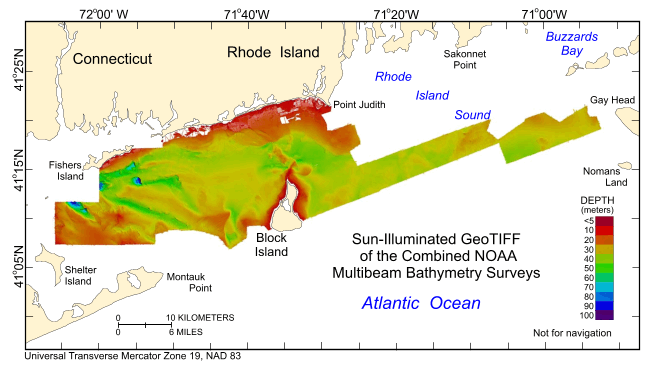| Description |
Detailed bathymetric maps of the sea floor in Block Island and Rhode Island Sounds are of great interest to the New York, Rhode Island, and Massachusetts research and management communities because of this area's ecological, recreational, and commercial importance. Geologically interpreted digital terrain models (DTMs) from individual surveys provide important benthic environmental information, yet many applications require a geographically broader perspective. For example, individual surveys are of limited use for the planning and construction of cross-sound infrastructure, such as cables and pipelines, or for the testing of regional circulation models. To address this need, we integrated 14 contiguous multibeam bathymetric DTMs, produced by the National Oceanic and Atmospheric Administration during charting operations, into one dataset that covers much of Block Island Sound and extends eastward across Rhode Island Sound. The new dataset, which covers over 1255 square kilometers, is adjusted to mean lower low water, is gridded to 4-meter resolution, and is provided in UTM Zone 19 NAD 83 and geographic WGS 84 projections. This resolution is adequate for sea-floor feature and process interpretation but is small enough to be queried and manipulated with standard Geographic Information System programs and to allow for future growth. Natural features visible in the grid include boulder lag deposits of winnowed Pleistocene strata, sand-wave fields, and scour depressions that reflect the strength of the oscillating and asymmetric tidal currents and scour by storm-induced waves. Bedform asymmetry allows interpretations of net sediment transport. Together the merged data reveal a larger, more continuous perspective of bathymetric topography than previously available, providing a fundamental framework for research and resource management activities off the Rhode Island coast. [More]
|
